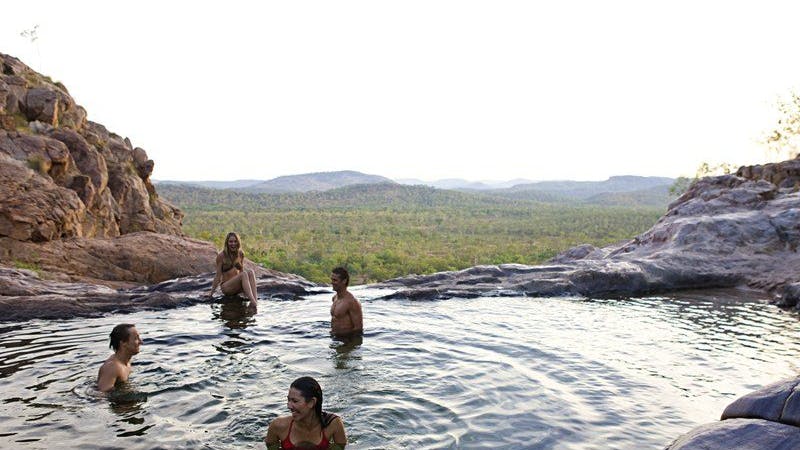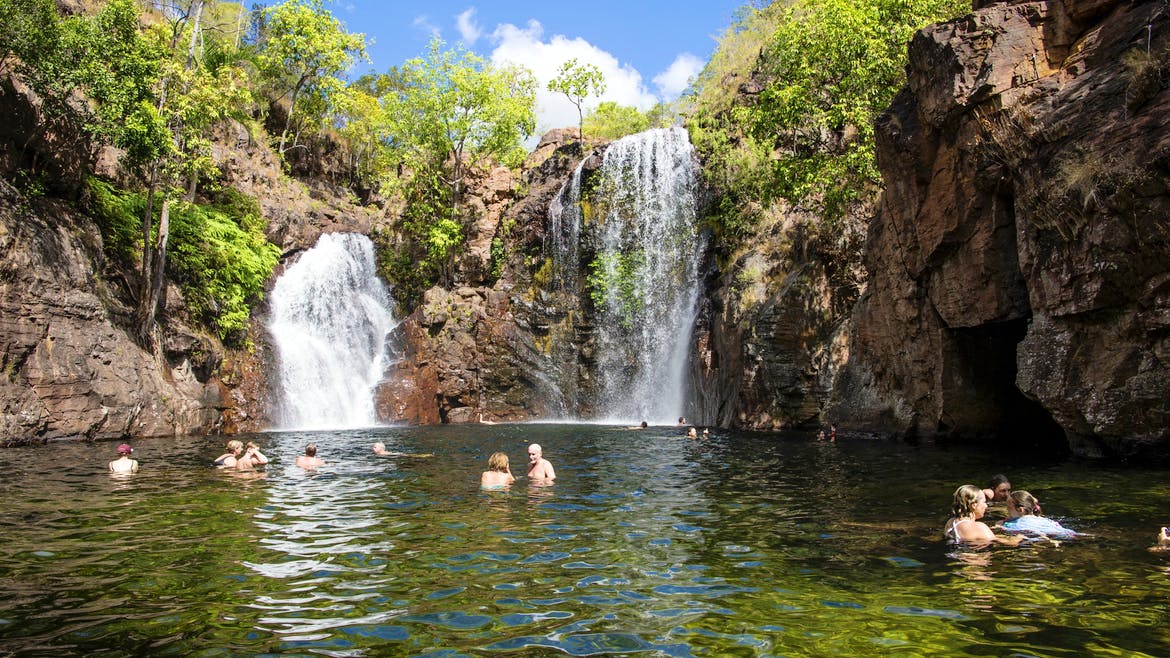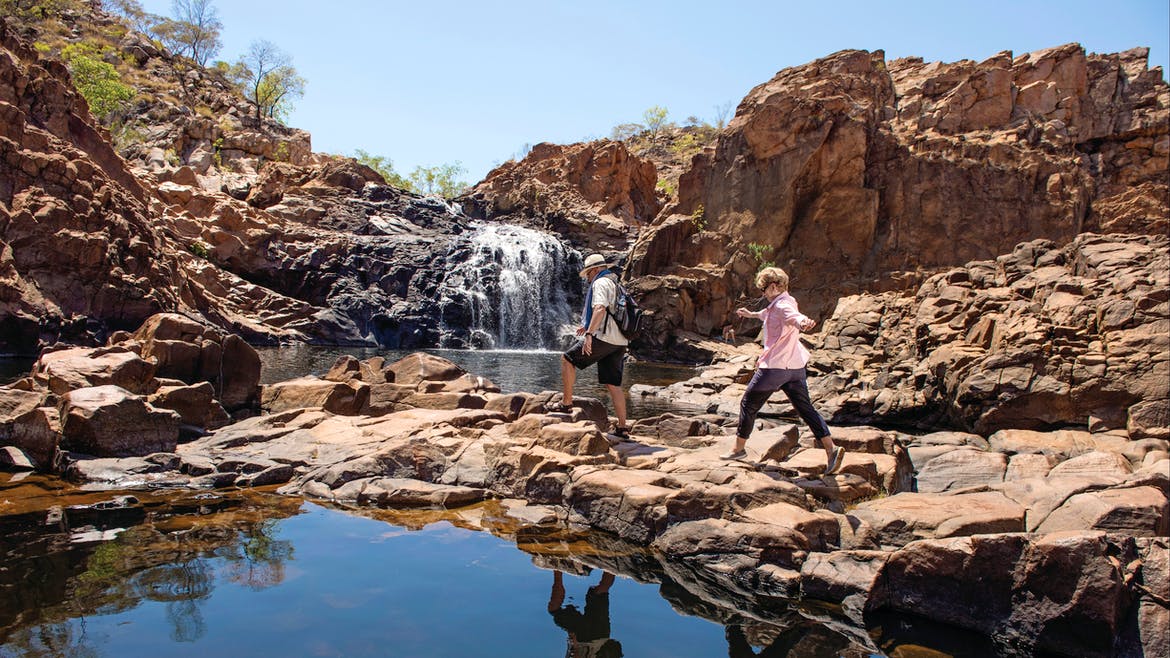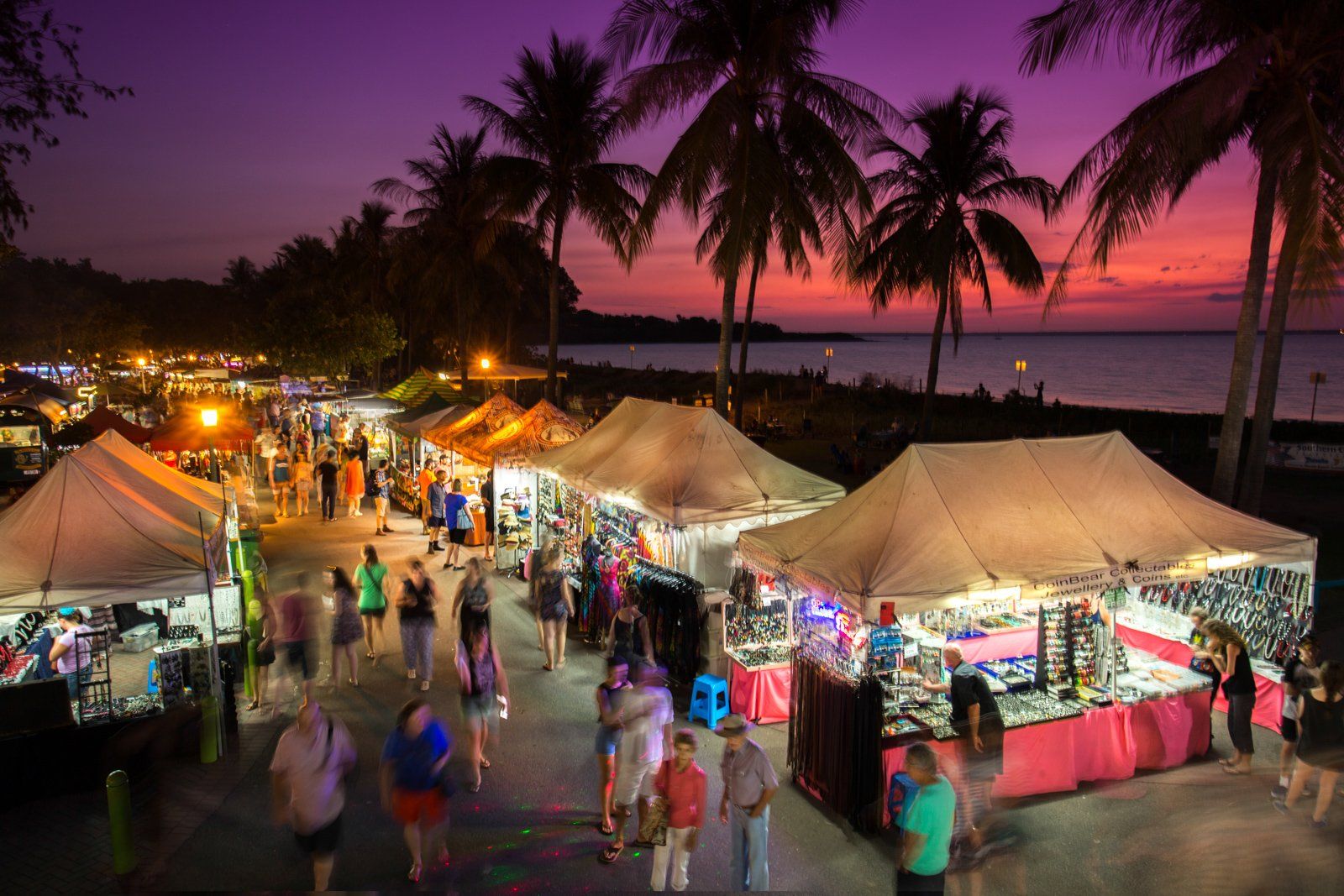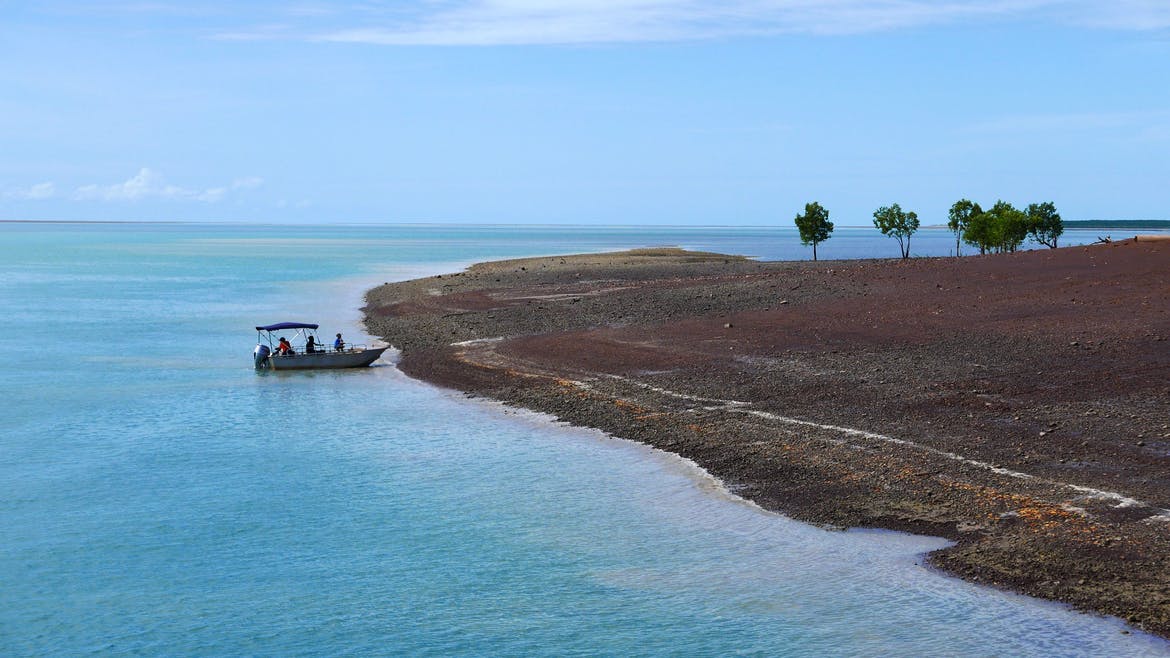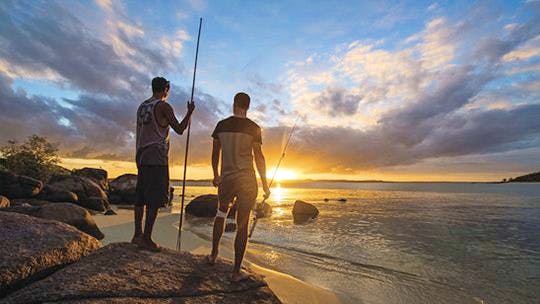With so many exceptional fishing possibilities, you’ll never be left with just a story about the one that got away.
Fishing in this part of the world is about more than just the catch, timeless landscapes, wild rivers, and truly remote destinations make the Top End an unrivalled fishing destination.
Fed by our Monsoon climate, the tropical rainfall during our Wet season creates a rich and fertile marine environment resulting in spectacular fishing right across our 4 seasons. The Build-Up, Wet Season, Run-Off and Dry each have their own unique fishing opportunities to take advantage of and your guide will help you not choose the one that suits you best.
Come aboard our world class guide boats for a Territory fishing experience like no other. From local harbour charters, 5 minutes from your hotel, to live aboard motherships anchored in remote river systems. Alternatively, visit one of our Lodges or Safari Camps located right across the Territory coastline.
When is the best time to go fishing in the NT?
The fishing never stops in the Northern Territory with boundless opportunities to claim an impressive catch, though the four distinct seasons have an influence on the best place to wet a line and which species you should be targeting.
Permits and Regulations
You don’t need a recreational fishing licence in the Northern Territory, however there are rules and restricted zones in place.
Permits are required to enter Aboriginal land and may also be required for access to tidal waters overlying Aboriginal land for fishing purposes. Recreational fishers should also respect and recognise the cultural importance of these waters to traditional owners. Your tour operator can handle this for you before you set-off.
Fish size and bag limit regulations
If you plan to keep your catch you must ensure it is of the legal size required in the Northern Territory and you don’t exceed the General Personal Possession Limit (GPL). The maximum number of fish a person may have in their possession at any time during a fishing trip is 15, though you should only take enough for your immediate needs.
Included within the 15 fish limit, is a species limit for certain fish.
More information is available here
Protected species must be released unharmed. You must not keep any of these protected species: all species of cod or groper longer than 1.2m, sawfish, northern river and speartooth sharks, and giant clams.
The possession limits in place help make recreational catches sustainable, share catches fairly among the fishery sectors, reduce local over-fishing, and help stop the illegal sale of fish. Follow the directions of your tour operator, police and authorised persons and you’ll be fine.
Other things to do in the Northern Territory
Fishing is one of the biggest attractions in the Northern Territory, but there is just as much to explore when you’re not on the water including breathtaking natural landscapes and unique cultural experiences. Check out some of these breathtaking attractions while you’re here.
